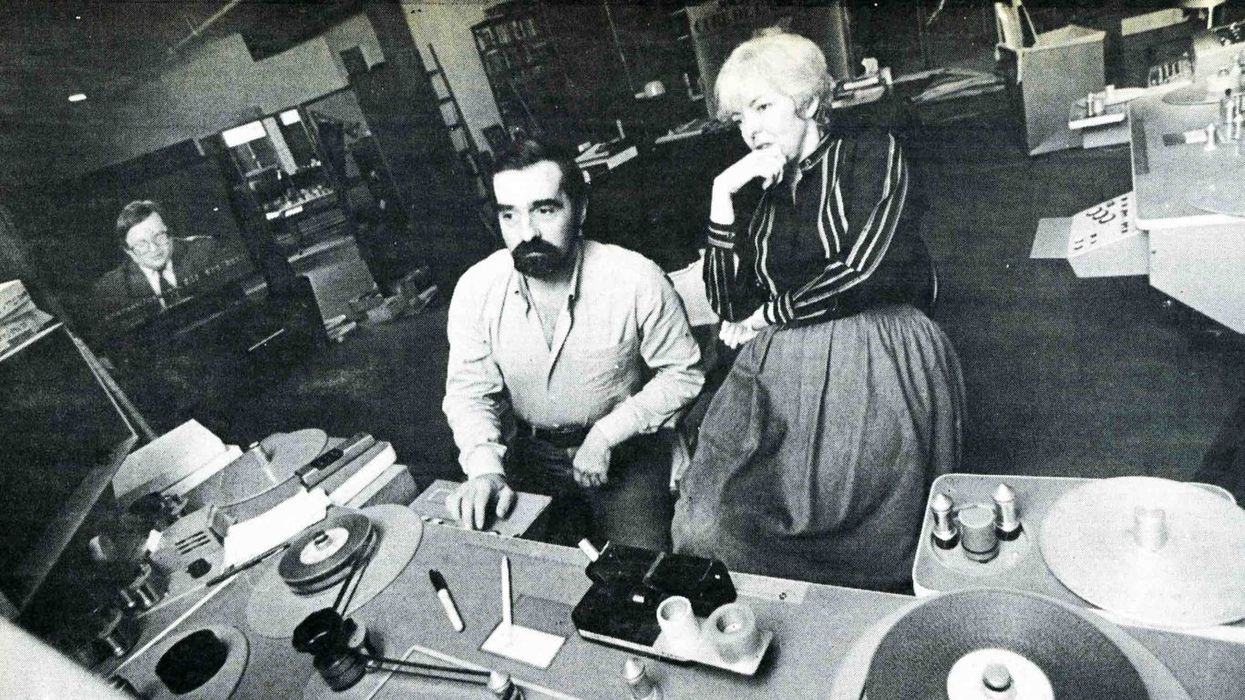What Can the Iconic Thelma Schoonmaker Teach Us about Editing?
Oscar-winning editor Thelma Schoonmaker opens up about her approach to editing, as well as working with her partner in crime, Martin Scorsese.

This week, BAFTA Guru released a gem of an interview with legendary film editor Thelma Schoonmaker, in which she talks about the beginning of her career and how she approaches every film she edits.
Schoonmaker is widely known as Martin Scorsese’s stalwart editor, having worked on his movies for over 50 years. She is the second most-nominated editor in Oscars history, with seven nominations...not to mention, she has also won three for her work on Raging Bull, The Aviator, and The Departed.
Watch the full interview below.
“I’ve had all the luck anyone could have in the world.”
While initially Schoonmaker dreamed of being a diplomat and traveling the world, she was told she was “too liberal” because she protested the Vietnam War. So later, when she happened to see an advertisement in the New York Times from a Los Angeles filmmaker seeking a film editor, she jumped at the chance.
He happened to be “butchering” classic films for late-night TV slots, often removing entire reels from the films of Fellini and Visconti. She left and took a summer course in film at New York University, where she met Scorsese.
“We make 200 decisions a day when we’re editing.”
She credits Scorsese with teaching her the art of filmmaking and infusing her with a love for film. Scorsese also introduced her to the man who would eventually become her husband—the highly influential filmmaker Michael Powell.
Together, they’ve worked on 24 movies, and she discusses their work as being highly collaborative, involving hundreds of decisions every day.
“It is a wonderful creative process,” she says. “Between the two of us, we just constantly are exchanging ideas, and doing, as I said, what’s right for the film.”
“I read the script only once.”
She says she reads the draft of the project once, then relies on what Scorsese brings to the project, knowing that it can change from what's on the page. She doesn’t want to rely on source material as guidance.
Schoonmaker looks at the dailies and has the freedom to give feedback. If anything feels wrong (which she says rarely happens), she can speak up.
“It’s just a very lively, wonderful interplay of ideas all working towards the same goal, which is what is right for the movie."
She says she also stays off set, for the most part, so she is working with the footage alone and not any memories of being there on the day. This gives her what she calls a “cold perspective.” She wants to see only what is on film.
While watching the dailies together, Schoonmaker makes notes about what Scorsese’s intentions were and what his feelings for the film are. From there, she begins to put a version of the film together, then they work together to finish it.
“It’s just a very lively, wonderful interplay of ideas all working towards the same goal, which is what is right for the movie,” she says.
“What’s so funny about me?”
Schoonmaker points out the famous Joe Pesci scene from Goodfellas as an example of Scorsese’s genius. The scene is shot medium to show the reactions of several actors and elevate the sense of danger.
Aspiring editors can look at the pacing, framing, and acting of a scene like this as a way to understand how different cuts can increase or deflate tension.
What do editors need to succeed?
Schoonmaker closes the interview with a list of key qualities all film editors should possess, beginning with a strong sense of discipline, as well as a musical sense. She says that Scorsese has this ability in particular. You also need to be able to collaborate.
“Your job is to get his vision up on the screen,” she says. “You have to give him his chance to do it the way he wants to first, then he’s usually able to see if that doesn’t work, and you come up with another solution.
Sometimes she edits a scene up to four times to give options, and if none of them are used, she can’t have an ego about it.












